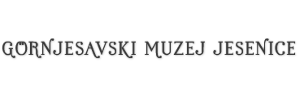Collection of fossils and rocks
The Jože Bedič paleontological collection, owned by the Gornjesavski muzej Jesenice, is the biggest and the most important collection of Palaeozoic fossils in Slovenia and one of the most impressive in South-Eastern Europe. Jože Bedič (1923–2007) of Jesenice was collecting fossils of protozoa, corals, snails, shells, trilobites, bryozoans mainly in the Karavanke (in Javorniški Rovt, at Pristava, in Planina pod Golico, Na Pečeh, above Dovje, at Kofce) and also in the Julian Alps and elsewhere. He walked hundreds of kilometres and each time he came home with his backpack, full of rocks. In 30 years he managed to collect more than 20,000 examples of fossils and, not being a professional geologist himself, he was sending the collected material to Dr. Anton Ramovš, the then leading Slovenian expert in the field of Palaeozoic fossils. Dr. Ramovš dated the rocks, positioned them in the appropriate geologic period and made sure that they were described also by leading foreign experts. This 30-year cooperation resulted in an extensive collection, including more than 40 so-called holotypes, i.e. examples which serve as the basis for scientific description and description of a new species; they are the standard by which all the examples, discovered later on, are compared.
A special position in the exhibition is taken by four teeth of carboniferous cartilaginous fish, the oldest known remains of vertebrates in the area of Slovenia; they are ancient ancestors of the present-day sharks. Jože Bedič gifted an extensive collection to Gornjesavski muzej Jesenice. You can see fossils which were named after Jesenice (Brahiopod jesenicianus) and Jože Bedič: trilobite genus is called Bedicella, while a trilobit species is Paladin (Kaskia) bedici.




